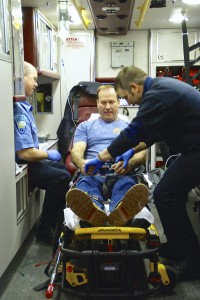Improving EMS Stroke Care: New Models for Saving Patients’ Life’s.

To think of stroke as a life or death situation is to over-simplify. The concept of “Time Is Brain” doesn’t refer to inanimate neurons that die as a stroke progresses. Each moment of delay in stroke care can destroy not only a patient’s ability to perform activities to get through the day, they can also lose cells that contain personality and memories. Even patients who survive may lose part of their life. As hospitals are developing new methods of treatment for stroke victims, what role is there for EMS? This program will examine new in-hospital treatments like site-specific thrombolytics, clot corkscrews, cranial hypothermia, as well as the critical role of EMS in each phase of Stroke Systems of Care. These systems rely on both ALS and BLS providers to not simply save patients’ lives. This lively, pertinent and through-provoking lecture shows how the actions of EMS providers are key to every step of saving stroke patients’ life’s.
Teaching Formats:
-Lecture
-Question and Answer
-Handouts
Learning Objectives: Students will learn:
-The impact of cerebrovascular accidents on the US Healthcare System.
-Pathophysiology and differentiation of embolic, thrombotic, hemorrhagic and lacunar strokes and stroke imitators.
-Stroke specific assessment techniques including Pre-hospital and In-Hospital Stroke Scales.
-Emerging cerebrovascular care technologies including interventional neurology telemedicine, remote ischemic conditioning, intravascular surgical therapy and more.
-The role of the EMS provider in comprehensive Stroke Systems of Care.








